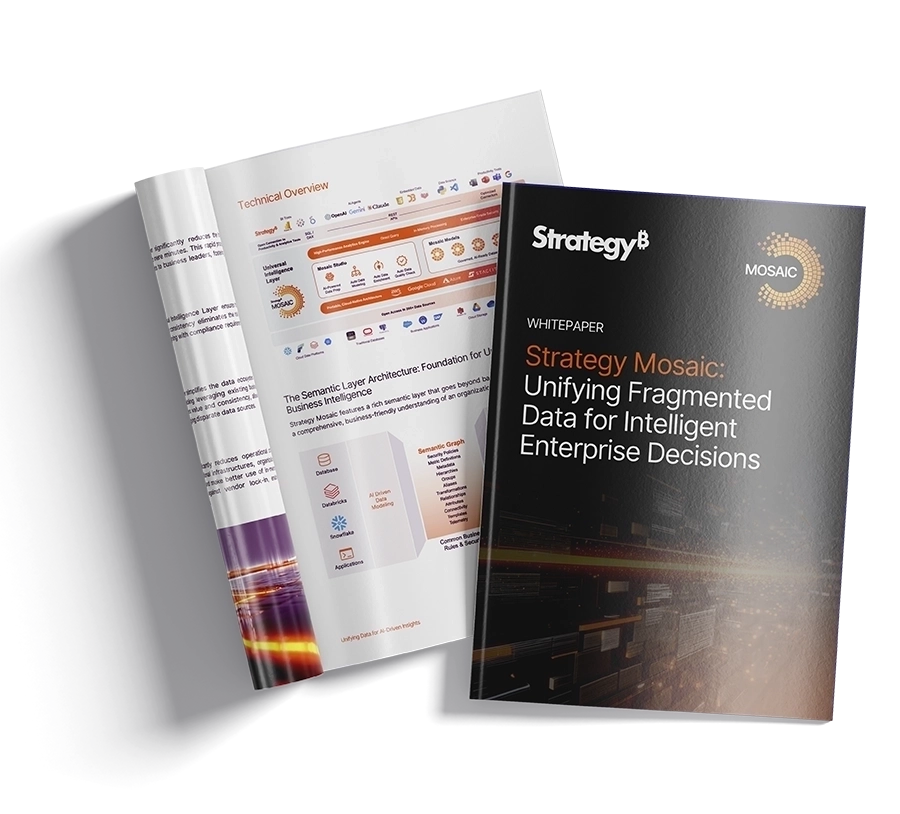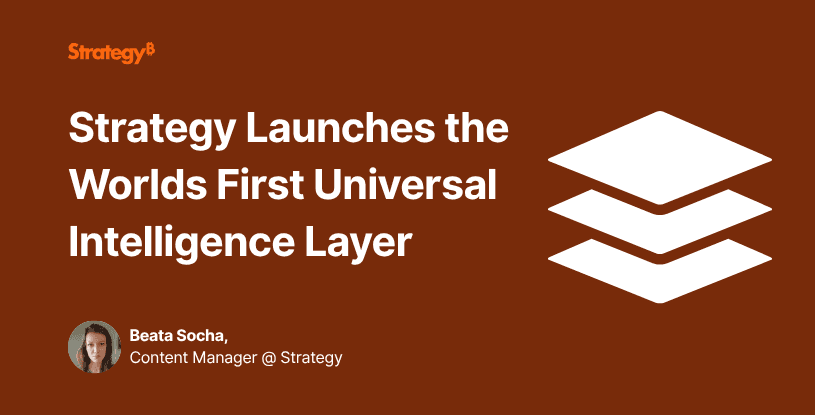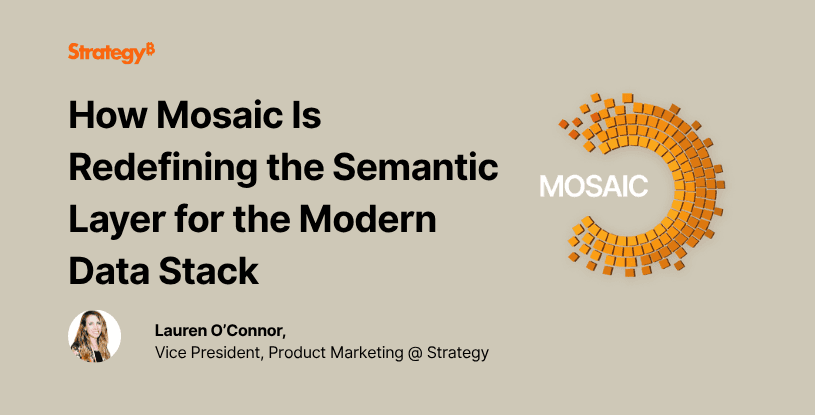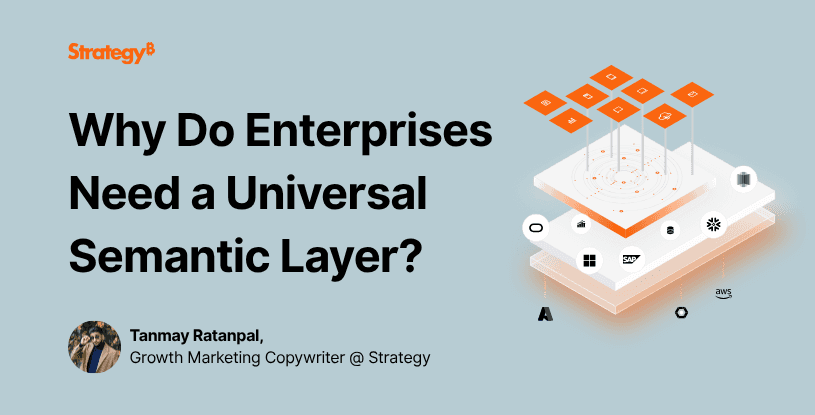Universal Semantic Layer: The missing link in enterprise AI Success
Every executive wants AI to make their business smarter.
They want faster decisions, sharper forecasts, and real-time insights that deliver the golden metric—whether it’s “customer lifetime value,” “revenue growth,” or "operational efficiency".
But for most enterprises, the reality feels different. Teams juggle conflicting dashboards, reports rarely align, and “AI insights” often spark more confusion than clarity.
So, what’s really holding AI back from enterprise-wide adoption? Is it the technology itself—or the foundation it stands on?
Why enterprise AI keeps falling short
AI-powered analytics is only as effective as the data powering it.
Enterprises rely on vast datasets to feed AI the context, information, and logic it needs to “think.” In other words, the cleaner the data input, the clearer and more reliable the output.
But precision is everything. When datasets are fragmented or misaligned, AI systems produce inconsistent or even misleading results.
This phenomenon, often called “AI hallucination,” is typically caused by:
- Fragmented data across multiple systems and tools
- Legacy insights that can’t be scaled or trusted
- Inconsistent KPI definitions that vary across teams
- Departmental silos that block feedback between data and decisions
Without a unified and governed source of data, AI-powered analytics becomes a game of chance rather than a source of truth.
In short, it’s not that AI models are broken—it’s that the foundation beneath them is unstable.
The universal semantic layer changes everything
That’s where a universal semantic layer comes in.
It acts as a standardized, central bridge between enterprise data and its users, creating a consistent, business-friendly view of metrics and relationships across every tool and platform.
For example, when marketing and sales teams use different BI tools, terms like “qualified lead” or “revenue” often mean different things, leading to conflicting reports and insights. Without this layer, organizations end up debating numbers instead of driving outcomes.
With a universal semantic layer, enterprises gain a single, trusted source of truth that ensures data is clean, consistent, and AI-ready.
As a result, AI-powered analytics becomes accurate, governed, and scalable—enabling faster, more confident decisions across the business.
The enterprise-wide impact of a universal semantic layer
A universal semantic layer doesn’t just serve executives—it transforms how every team works with data.
- Analysts uncover deeper, more reliable insights.
- Non-technical users explore and visualize information faster through self-service analytics.
- Data teams maintain governance and control without slowing innovation.
It also reduces cross-department friction, ensuring everyone interprets KPIs and dashboards the same way. Instead of debating “whose numbers are right,” teams finally focus on “what our numbers mean.”
Insights become trustworthy. AI becomes actionable.
And this is where Strategy Mosaic takes the concept further—adding AI precision, stronger governance, and enterprise flexibility at scale.
The benefits of a universal semantic layer
Strategy Mosaic, our universal semantic layer, connects multiple data systems, streamlines definitions, and establishes a single, governed source of truth—so you can see all your insights in one place.
It blends enterprise-grade governance with AI-powered analytics to harmonize data, accelerate insights, and strengthen your analytics foundation.
Mosaic capability | What it does | Why it matters |
Unified Intelligence and Governance | Unifies KPIs, definitions, and governance across all data sources. | Puts everyone on the same page—so leaders and analysts make decisions from one trusted, AI-powered version of the truth. |
Business-Friendly Data Modeling | Empowers business users to easily define metrics while giving IT highly scalable tools to create, govern, and approve semantic definitions. | Reduces data preparation time and ensures "business-friendly, IT-approved" governance, accelerating AI adoption. |
Vendor-Agnostic Connectivity | Connects seamlessly to systems from multiple vendors—no migration needed. | Gives enterprises flexibility and cost-efficiency while avoiding vendor lock-in or forced re-platforming. |
Portability | Moves easily between database platforms without costly rewrites. | Preserves leverage, simplifies migrations, and empowers business agility as technologies and needs change. |
In-Memory Query Acceleration | Optimizes performance with intelligent caching and hybrid execution. | Delivers near-real-time insights, enabling faster decisions across teams without straining infrastructure. |
The result: smoother operations, smarter decisions, and complete alignment on metrics, goals, and strategy.
See how a universal semantic layer transforms AI-powered analytics
When data finally speaks the same language, AI doesn’t just predict—it delivers everyday impact.
A universal semantic layer does more than prepare data for AI. It builds the foundation for long-term, enterprise-wide success.
By unifying data into one trusted, vendor-neutral intelligence layer, Strategy Mosaic helps organizations stay agile, governed, and AI-ready without costly overhauls or disruption.
The bottom line: Executives who integrate a universal semantic layer don’t just unlock the golden metric. They operationalize it for long-term success.
How do enterprises maximize AI impact across industries?
By transforming the data foundation. Discover how Strategy Mosaic harmonizes data, accelerates insights, and powers AI — without costly overhauls.
Related posts






